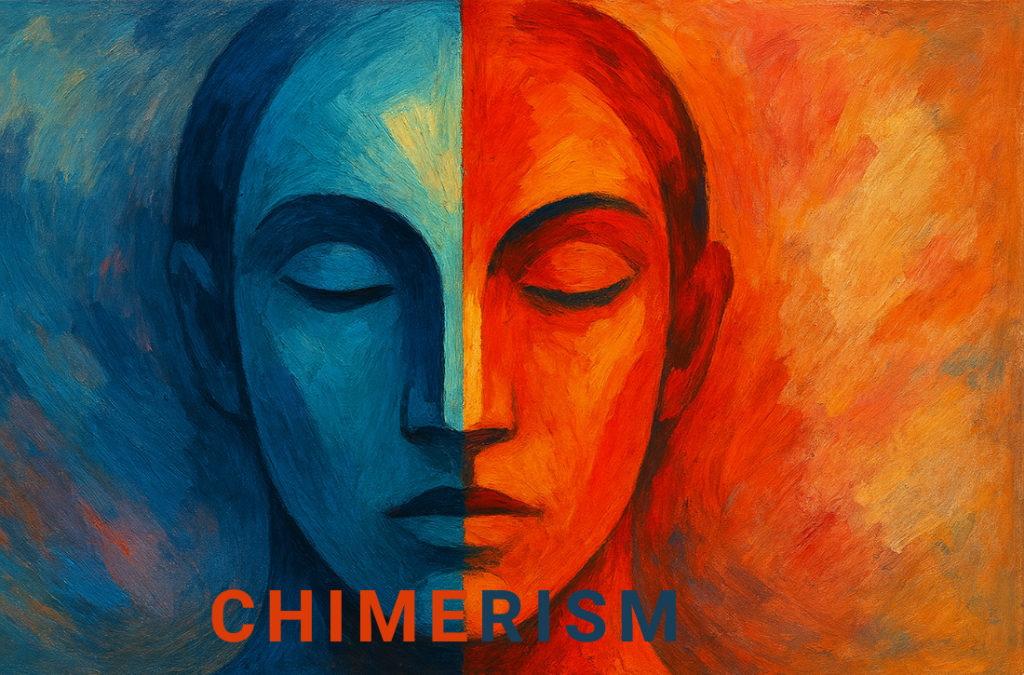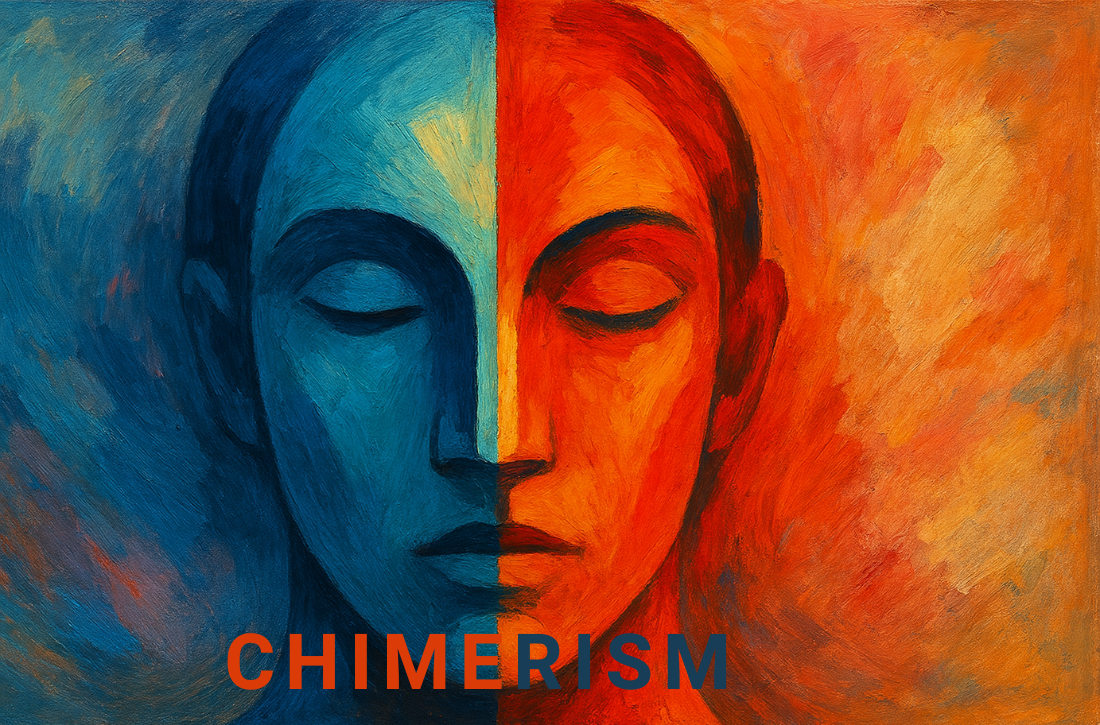One body, two people? It sounds like a science fiction thriller,
but reality surpasses imagination.
Sometimes, the most surprising answers come from within—directly from our DNA. One of the most intriguing phenomena in genetics is chimerism. It may sound like a curse or science fiction, but like everything related to DNA, reality surpasses imagination.
This is indeed a strange and complex reality that reveals how elusive our biological identity can be.
Back to Greek Mythology
The word "chimera" comes from the Latin Khimaira, meaning "she-goat."
In Greek mythology, a chimera was a fearsome creature composed of a lion, a goat, and a snake. One creature—three parts, each representing something entirely different.
This image of an animal composed of several separate entities became a perfect analogy for the genetic phenomenon bearing the same name. In biological Chimerism, there is also one body containing two entirely separate sources.
The term "Chimerism" was first used in the medical field in the early 1920s and has since been used to describe human chimeras.
What Exactly Is Human Chimerism?
A human chimera is a person who has two different DNA sets within their body. That is, not all their cells are identical—some carry one genetic makeup, and others carry a completely different one. This occurs, for example, when two separate embryos (twins) merge in the early stages of pregnancy to form a single embryo. The result? One person containing two individuals. Sometimes, this phenomenon is discovered by chance, and sometimes it remains undetected.
Chimerism can also result from bone marrow transplants, organ transplants, or extensive blood transfusions. Therefore, it's crucial to consider this possibility when DNA test results are confusing, especially if connections are found between individuals who shouldn't be genetically related (after ruling out factors like adoption, extramarital pregnancies, IVF, etc.).
Beyond any imagination
Lydia Fairchild – Whose Children Are they?
In 2002, Lydia Fairchild, an American woman from Washington State, was a mother of three and pregnant with her fourth child. When she applied for state welfare assistance, she was required—like any parent in this situation—to provide genetic proof that she was indeed the biological mother of her children.
Her partner at the time (the children's father) was also tested, and his DNA confirmed paternity. But what about Lydia? The results were surprising and alarming: DNA tests showed no match between her and any of her children. Authorities suspected fraud, while Lydia was shocked that the children she had given birth to didn't match her DNA. The case became more complicated when the state considered revoking her custody.
Investigators were present at the birth of Lydia's fourth child and tested the newborn immediately. The result left everyone stunned: this baby, just delivered from his mother's womb, also didn't carry her DNA.
Fortunately, her attorney didn't give up easily. He conducted a thorough investigation and raised the possibility of chimerism in Lydia's case. Only after additional testing of cells from other parts of Lydia's body, including her cervix, was it discovered that the DNA from her cervical tissue differed from that in her skin and blood and matched her children's DNA perfectly.
Lydia Fairchild was identified as a chimera and was granted official custody of her children permanently.
Casey Bunkell and the Twin Brother Who Never Was
Casey Bunkell, a 34-year-old American, took a home DNA test that revealed a surprising result: his son's DNA didn't fully match his own but matched partially. In fact, the amount of shared DNA between him and his son corresponded to that of an uncle and nephew, not father and son. After further testing, it was discovered that he carried two genetic sets—one his own and one from a twin brother who had been absorbed into him in the womb. Casey was a case of chimerism.
Although there are no known criminal cases today involving chimeras, the subject can be challenging when DNA evidence from a crime scene doesn't match the suspect, even if all other evidence points to them.
Chimerism and Legal Challenges
In the legal system, DNA is considered particularly strong evidence. But when a person is a chimera, the picture becomes complicated, and results may point to the wrong individual.
Today, there's greater awareness of the issue, but cases are rare and difficult to diagnose. Most laboratories don't test for chimerism unless there's a specific suspicion. When it is discovered, it can undermine trust, affect relationships, and sometimes impact legal rights.
What Does It Mean? Am I Not Myself?
Chimerism challenges the simple idea that “I = my DNA.”
Is our identity determined by our blood cells? Our saliva? Our reproductive cells?
What happens when more than one genetic version exists within us?
If one person’s body contains two distinct genetic systems — then who are they?
Is one of them the “real” one?
Or is that person the sum of all their parts?
If your blood and saliva come from one genetic line, but your eggs or sperm carry another — who are you really?
Chimerism can trigger deep feelings of confusion.
Does discovering that you're a chimera create a sense of dual identity?
Does it matter if the part of your body that “created” your child is biologically different from what you consider “you”?
Do chimeric individuals feel different once they learn they carry someone else who was never born?
Bottom Line
Chimerism is rare, but fascinating.
It reminds us just how complex the concept of “biological truth” can be.
As DNA technologies evolve, we won't just solve mysteries — we'll encounter unexpected truths. And the real question becomes: How do we live with these truths?
In Real Life
Listen to Taylor Muhl talk about living with Chimerism







